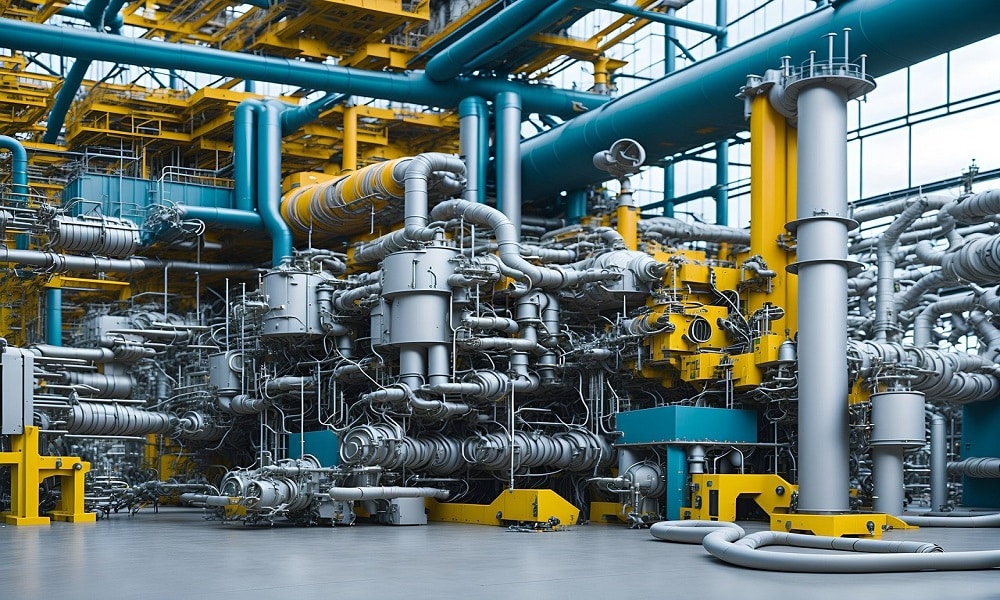In manufacturing operations, cleanliness often goes unnoticed but plays a crucial role in ensuring efficiency and productivity. A clean and organized work environment not only presents a positive image but also greatly influences overall functioning. This article will delve into the importance of cleanliness in manufacturing, its profound effects on efficiency, and some recommended strategies for upholding operations. From preventing accidents to minimizing downtime, cleanliness is a cornerstone of successful manufacturing. We’ll explore how a clean workspace enhances employee morale and contributes to a safer, more productive work environment. Additionally, we’ll provide practical tips for maintaining cleanliness and orderliness in manufacturing facilities to optimize operations and achieve better results.
Improving Equipment Efficiency
A rationale for giving priority to cleanliness within manufacturing facilities is its impact on equipment performance. Over time, machinery and tools utilized in production can easily accumulate dust, debris, or grease. This accumulation leads to performance and can result in unnecessary strain on crucial components.
By establishing cleaning routines for equipment and using manufacturing industry cleaning solutions, manufacturers can notably enhance their dependability and lifespan. Cleaning eradicates contaminants that could potentially obstruct moving parts or interfere with precision mechanisms. Moreover, a maintained machine operates smoothly, reducing the likelihood of breakdowns or interruptions in production.
Prioritizing Workplace Safety
Another aspect influenced by cleanliness in manufacturing is safety. Manufacturing processes involve handling substances like chemicals, oils, and sharp objects. Ensuring that work areas are tidy and free from mess or spills is essential for creating a workplace for employees.
Cleaning routines should not only cover upkeep tasks but also follow proper waste disposal guidelines. Warning signs should be placed to highlight zones, and spill kits should be easily accessible throughout the facility. An organized workspace reduces the risk of accidents like slips, trips, and falls while maintaining pathways, which helps in emergency evacuations when needed.
Preventing Downtime with Regular Maintenance
Maintaining cleanliness is closely linked to maintenance programs that focus on identifying issues. By integrating cleaning into maintenance schedules, manufacturers can detect potential problems before they escalate into major disruptions that cause downtime.
Scheduled cleanings provide technicians with the opportunity to inspect equipment for any signs of wear or damage. This proactive approach enables adjustments or repairs to be carried out before any issues turn into interruptions. Additionally, modern cleaning equipment like vacuums can aid in controlling contamination during work processes.
Ensuring Quality Control and Compliance
Keeping manufacturing facilities clean is vital for meeting quality standards and complying with regulations. Maintaining cleanliness in manufacturing facilities is crucial for reducing the risk of product contamination and ensuring production processes.
By following cleaning protocols, manufacturers can make compliance with guidelines and audits straightforward. This allows them to confidently validate the integrity of their manufacturing sites and adhere to industry standards, guaranteeing a high level of product quality.
Additionally, keeping workspaces consistently clean contributes to upholding the reputation of the manufacturing facility. When visitors, such as investors or clients, encounter a well-organized environment, they are more likely to view the manufacturer and recognize its dedication to excellence.
Under the section titled “Creating a Culture of Ownership,” it is emphasized that maintaining cleanliness goes beyond cleaning tasks in manufacturing operations. It involves establishing a company culture that values cleanliness as a shared responsibility among all individuals participating in the operation.
Creating a Culture of Ownership
Encouraging ownership at every level within the organization – from workers to management – fosters a sense of pride in upholding operations. Regular training on cleaning procedures underscores that hygiene is not merely an aspect but an essential part of every employee’s role within the company.
Ensuring a maintained and orderly manufacturing environment is essential for maximizing productivity, safety, and overall prosperity.
Enhancing Environmental Sustainability
An additional point to consider is the impact of cleanliness on environmental sustainability within manufacturing operations. Prioritizing cleanliness not only contributes to the efficiency and safety of the manufacturing process but also plays a crucial role in reducing the environmental footprint of the facility. Implementing eco-friendly cleaning solutions and methods can minimize the use of harmful chemicals, reduce waste, and promote recycling efforts. By focusing on sustainability in cleaning practices, manufacturers can ensure that their operations are not only efficient and safe but also environmentally responsible.
Conclusion
By implementing cleaning routines that prioritize cleanliness in maintenance procedures and fostering a culture of responsibility among employees, manufacturers can enhance equipment efficiency, reduce disruptions, maintain quality standards, and create a positive impression of their facility. Recognizing the importance of cleanliness in manufacturing operations is key. Integrate it into your processes to increase production effectiveness and achieve success in today’s competitive market. From reducing downtime to improving overall efficiency, cleanliness plays a vital role in ensuring smooth operations and meeting customer expectations.
Emphasizing cleanliness not only improves productivity but also enhances workplace safety and employee morale, contributing to long-term success in the manufacturing industry.


